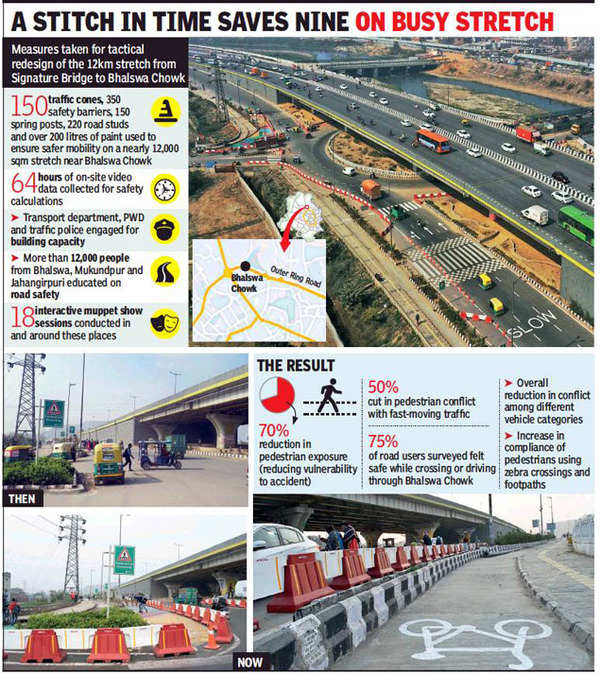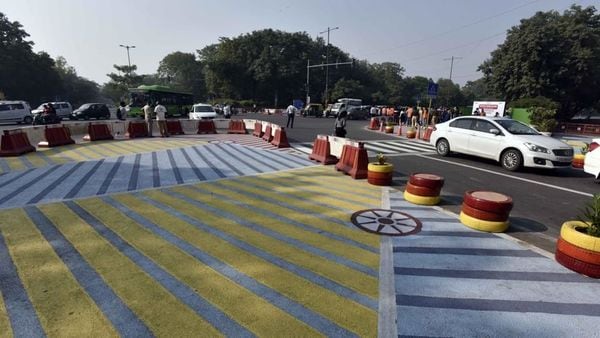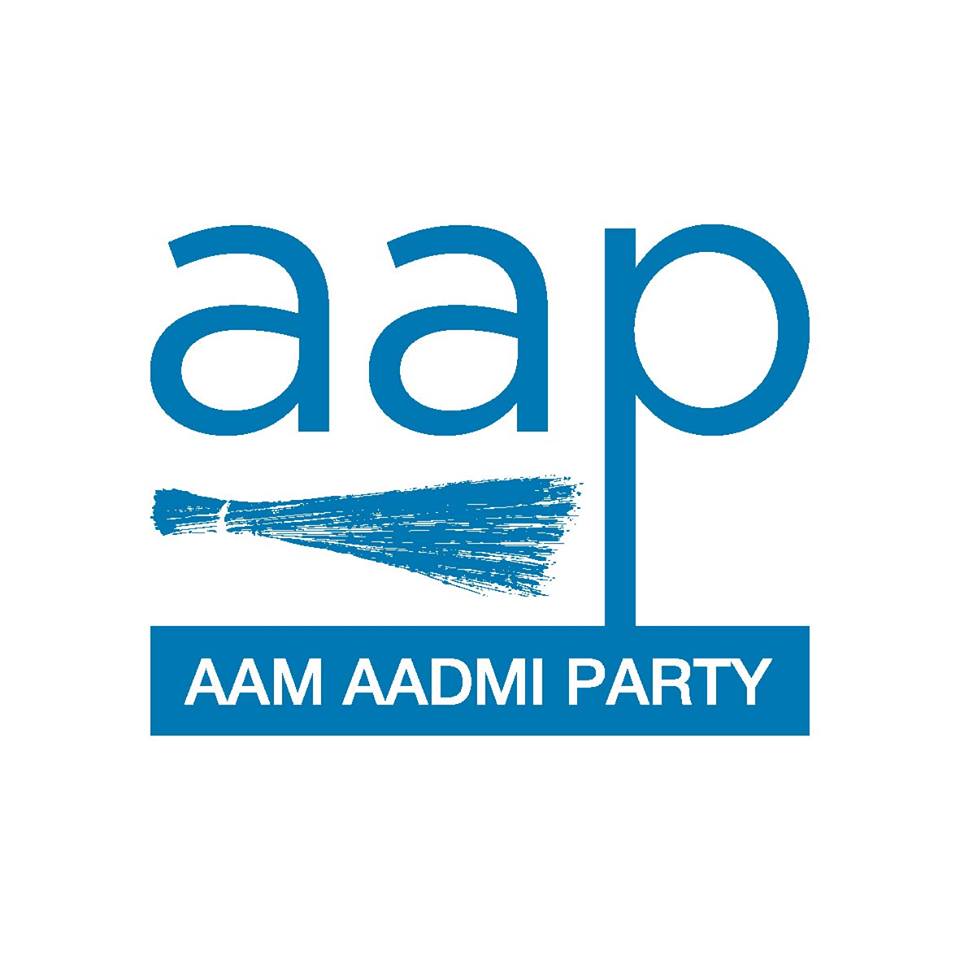

Modern road design emphasizes the best use of space for motorized and non-motorized vehicles as well as for pedestrians, including differently-abled people. In this regard, the AAP Delhi Government has made special efforts to upgrade the existing infrastructure in the city.
“Now, we will undertake beautification and redesigning of 540 kms of 100 feet wide roads on the line of European standards under the first phase.” – Arvind Kejriwal, Delhi CM, on 14th Aug 2021 (Link)

Streetscaping and Beautification of Roads


(Source: Tweet by AamAadmiParty)
Delhi government has initiated the project to redesign 540 km of 100-ft wide Delhi roads along the lines of European standards.
The decision was taken after CM Arvind Kejriwal inspected a successful pilot project of 800 m long stretch of Chirag Delhi-Sheikh Sarai Road.
Redesigned for the occasion of 75 years of Independence, statues of freedom fighters and artifacts of historical heritage have been installed, along with fountains, sandstone benches etc. The road, along with a cycle track and footpath has been designed to ease traffic flow.
“ दिल्ली की सड़कों को रीडिज़ाइन और सुंदर बनाया जा रहा है। आज एक सड़क के Sample डिज़ाइन का निरीक्षण किया। अब 540 KM लम्बी सड़कों का सौंदर्यीकरण करेंगे। “ – Arvind Kejriwal, Delhi CM, in a tweet (Link)

Sample Stretches
The AAP government announced in Sep 2021 that, as part of the 540 km project, 9 stretches of around 1 km each would be developed as samples and the best designs would be replicated across the city. These 9 roads are also known for accidents and traffic congestion.
The motive is to remove congestion and ensure a smooth flow of traffic through an organized lane system by increasing the efficiency of the existing space of the roads. There will be measured and planned spaces for vehicles, non-motorized vehicles, 10 feet wide footpaths and sidelanes, disabled-friendly infrastructure and green areas. The project intends to completely remove road dust and reduce pollution.
The streetscaping will not only design the spaces but also add interesting aspects from the surroundings.

(Source: The New Indian Express)
This is part of the AAP government’s ambitious project ‘Streetscaping, Redesigning and Beautification of Delhi Roads’.

Zero Fatality Corridors
The Zero Fatality Corridor model’s 4Es for road safety are Engineering, Enforcement, Emergency Care and Education.
In 2018, the AAP Government’s Transport Department entered into an agreement with the Save Life Foundation for road safety and launched the model as a pilot project at Bhalswa Chowk to make Delhi accident-free, safe and secure for pedestrians and motorists.
“Delhi saw 1463 fatal accidents in 2019. Even in the pre-COVID scenario, there was a decrease of 13.5 per cent in the number of fatal accidents as compared to the previous year and the fatality rate has decreased by 13.43 per cent. Through this initiative, our aim is to make Delhi roads amongst the safest in the country.” – Kailash Gahlot, Delhi Transport Minister (Link)

Bhalswa Chowk
The first trial conducted during September 2020, across the 12-km accident-prone stretch between Signature Bridge and Bhalswa Chowk with 4 traffic black spots, yielded a positive result.
The project recorded 100 per cent reduction in road crash deaths through a 70 per cent reduction in pedestrian exposure and a 50% reduction of pedestrian conflict with fast-moving traffic.

(Source: Times of India)

Rajghat Intersection
[ Tactical urbanism includes low-cost, temporary changes to the built environment, usually in cities, intended to improve local neighbourhoods and city gathering places. – Wikipedia ]
The Delhi Government did a Tactical Urban trial in collaboration with Delhi traffic police and NGOs SaveLife Foundation and Swayam at the Rajghat intersection in Nov 2021. The road was made pedestrian-friendly, with plastic barriers, spring posts, cones, and other such equipment laid around the Rajghat intersection to reduce exposure of vulnerable road users to the traffic.
A six-point intervention strategy was used to redesign the Rajghat junction. Similar interventions will be replicated at 11 different high-risk stretches in the city.
“All the elements focus on either reducing the speed, or minimising conflict. Through these interventions we have managed to reduce the pedestrian exposure distance by about 50% and pedestrian exposure time by 30%.” – Ashish Kundra, Delhi transport commissioner (Link)

(Source: Hindustan Times Auto)
Apart from Rajghat, officials have identified 11 more intersections — Mukundpur Chowk, Nirankari Colony/Gopalpur Red Light, Azadpur Chowk, Majnu Ka Tila, Burari Chowk, Sarita Vihar Metro station, Nehru Place, Khel Gaon, Gandhi Vihar Bus Stand and ISBT Kashmiri Gate for the zero fatality corridor project.


